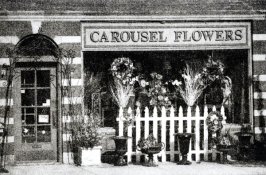Marco Buonocore
Member
Anyone using this lith developer successfully for prints?
I got some with a recent Freestyle order - I like the idea of it being a powder, 'cause it'll be easier to ship.
Mixed it up two nights ago; so it's pretty fresh.
At any rate, so far it's been pretty grim. I've tried Emaks Gr 2 & 3, Agfa MCC111, and Rollei 111 - giving each one 2.0 stops more exposure. Pretty standard stuff - I just want to get a feel for the developer.
Diluting it 1+1+3 didn't give a lot of love. No blacks (I've had a piece of emaks in there all afternoon, room lights on - and it's still just dark grey), no real lith action. A bit on the Agfa MCC111 - a *bit* - and less on the Rollei 111. They all look like ass, colour wise. No grit / grain / etc... The images would come up very faint in the first 2min, and by 10-12min they were getting 'muddy'. Blacks never really showed up.
Yesterday a friend was using the developer at 1+1+8, and I tried the emaks in it. Awful results. Took 30min to get anything resembling a print, but the colour was as gross a brown as you could imagine. He was using all sorts of paper; Foma, Rollei 111 & 132, some Maco VC, Ilfobrom... No interesting results. Consistently weak blacks.
So I'm wondering - does anyone use this with positive results? Any pointers? Any papers that seem to sing in it?
Would be very interested to hear what other's have to say.
Thanks!
I got some with a recent Freestyle order - I like the idea of it being a powder, 'cause it'll be easier to ship.
Mixed it up two nights ago; so it's pretty fresh.
At any rate, so far it's been pretty grim. I've tried Emaks Gr 2 & 3, Agfa MCC111, and Rollei 111 - giving each one 2.0 stops more exposure. Pretty standard stuff - I just want to get a feel for the developer.
Diluting it 1+1+3 didn't give a lot of love. No blacks (I've had a piece of emaks in there all afternoon, room lights on - and it's still just dark grey), no real lith action. A bit on the Agfa MCC111 - a *bit* - and less on the Rollei 111. They all look like ass, colour wise. No grit / grain / etc... The images would come up very faint in the first 2min, and by 10-12min they were getting 'muddy'. Blacks never really showed up.
Yesterday a friend was using the developer at 1+1+8, and I tried the emaks in it. Awful results. Took 30min to get anything resembling a print, but the colour was as gross a brown as you could imagine. He was using all sorts of paper; Foma, Rollei 111 & 132, some Maco VC, Ilfobrom... No interesting results. Consistently weak blacks.
So I'm wondering - does anyone use this with positive results? Any pointers? Any papers that seem to sing in it?
Would be very interested to hear what other's have to say.
Thanks!














